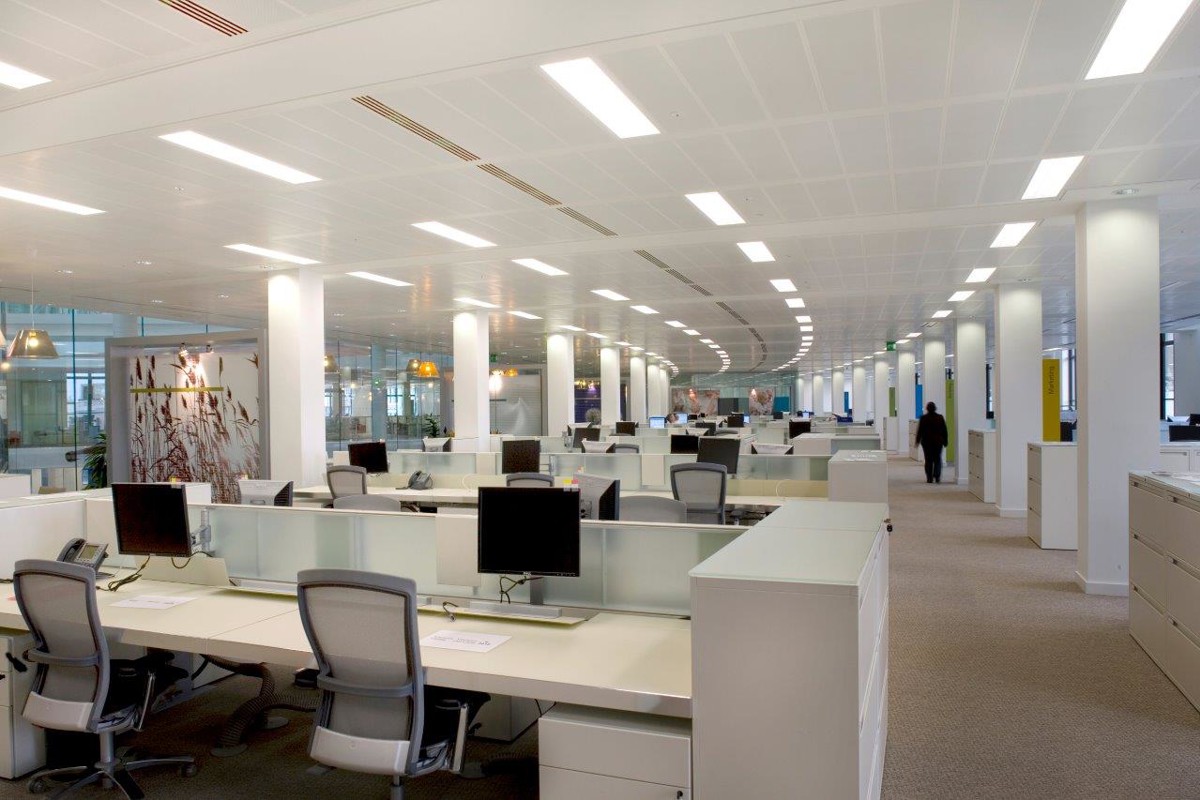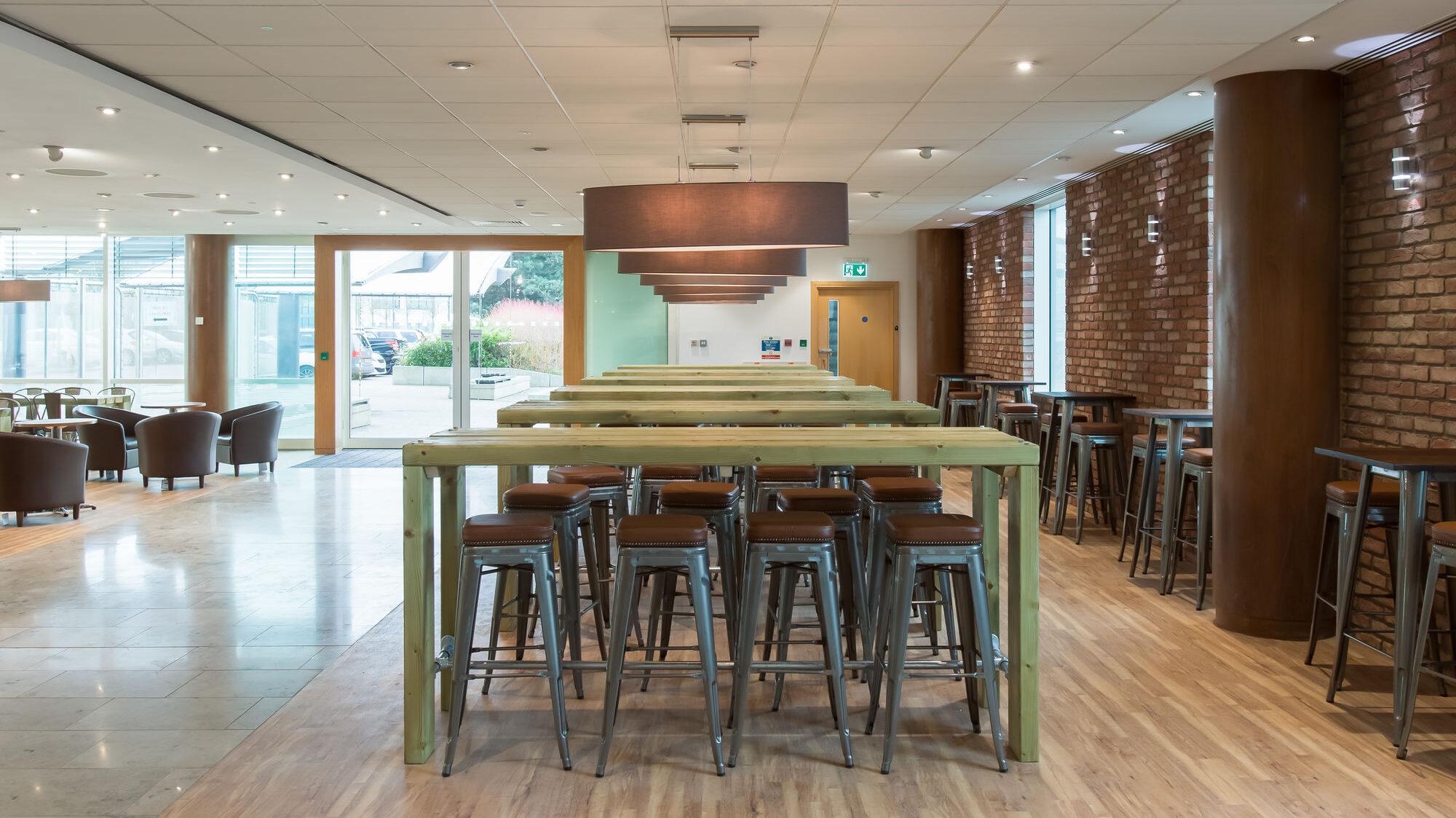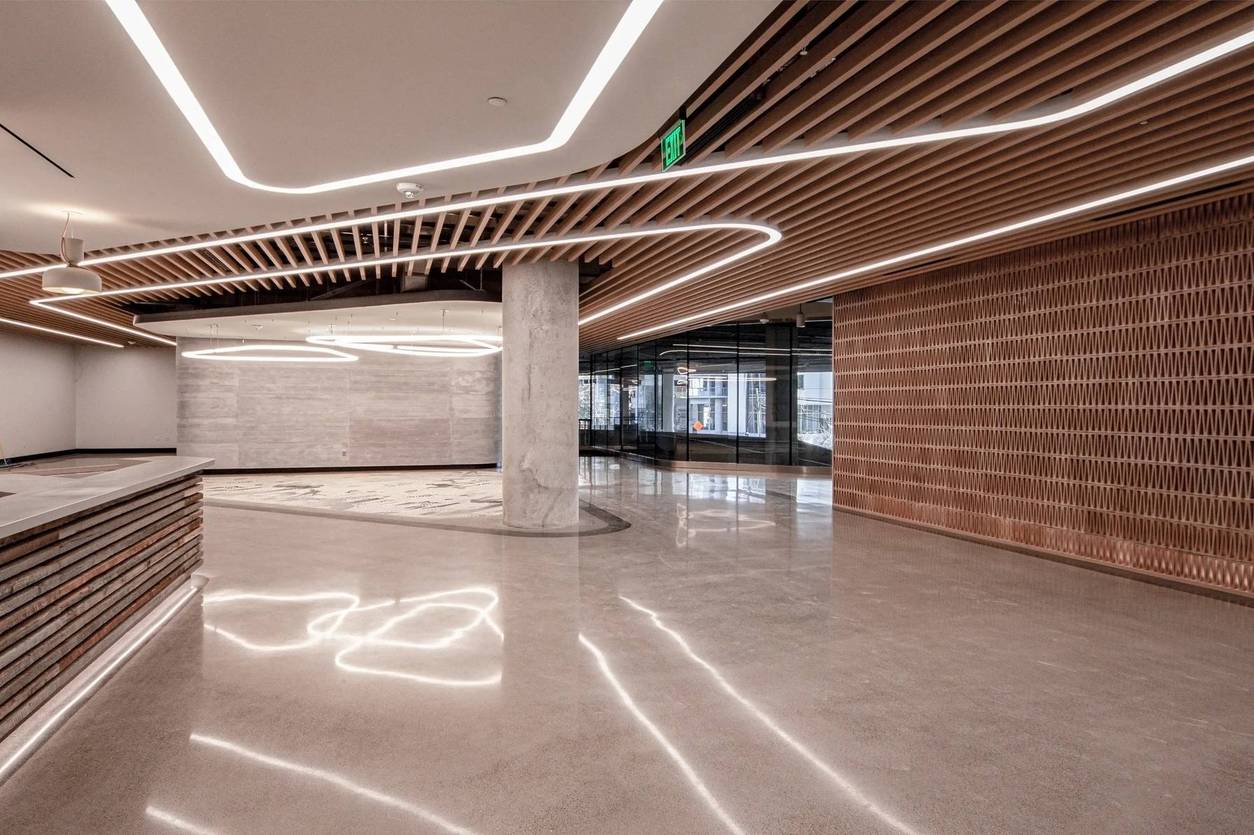PRANCE metalwork is a leading manufacturer of metal ceiling and facade systems.
Drop in Ceilings: Affordable and Easy Solutions
Drop in ceilings present a cost-effective solution for interior transformation while delivering stylish aesthetic value to your space. Suspended ceilings, which people call drop-in ceilings, present a functional combination with aesthetic appeal. Drop-in ceilings enable sound absorption while concealing pipes and wires, so they serve as a fundamental option in residential and commercial interior design spaces.
Guide to Drop in Ceilings: Definition and Overview

Drop in ceilings work by using a network of installed grid framework to support lightweight tiles or panels that remain in position. These panels exist in different format options using mineral fibre, PVC or metal as their foundational materials for numerous installation scenarios. A main ceiling suspends the grid structure to create an accessible opening which provides maintenance access for electrical wiring and ductwork and plumbing systems. Installations in areas requiring routine upkeep find this capability useful.
How Drop in Ceiling Systems Work: Installation and Functionality
Drop in ceilings function through the procedure of attaching metal grids onto the current ceiling plane. A rectangular or square tile pattern develops when the grid component gets securely attached to its framework. This installation system makes the process easier while allowing damaged tile replacement independently without requiring structural ceiling changes. The marriage of easy installation and tile substitution features makes drop-in ceilings a standard industry selection.
Top 5 Benefits of Drop-in Ceilings: From Acoustics to Energy Savings
1. Affordability: Cost-Benefit Analysis
The main financial advantage of drop-in ceilings comes from their affordability. Drop-in ceilings represent a more affordable alternative to traditional ceiling updates. The combination of inexpensive mineral fibre and PVC tiles, along with simple installation procedures, reduces both material and work expenses.
Industry data shows that the installation of grid-and-tile systems can reduce labor time by up to 75% compared to complex drywall construction, leading to significant project cost savings.
2. Easy Maintenance
These specific ceilings have built-in ease of access features. The tiles function like screws, so maintenance workers can quickly uninstall them when performing inspections or making repairs to systems hidden above. The repair of individual drop-in tiles remains possible and does not require technicians to replace the entire ceiling.
This non-destructive access is vital for commercial facilities, minimizing operational downtime and ensuring quick compliance with inspection requirements for HVAC, electrical, and plumbing systems.
3. Noise Reduction Solutions: Acoustic Performance
Designed for sound absorption, drop-in ceiling tiles provide optimal acoustic performance in office spaces as well as classroom environments and home theatre areas. Such acoustic properties make it possible to lower ambient noise while making the surroundings feel more comfortable.
For high-performance spaces, look for tiles that meet a Noise Reduction Coefficient (NRC) rating of 0.70 or higher. Specialized acoustic metal panels (perforated with sound-absorbing backing) can achieve NRC ratings up to 0.85 or 0.95, effectively absorbing 85% to 95% of sound.
4. Design Versatility: Aesthetic Options and Styles
Drop-in ceilings present different design choices and patterns alongside varied finishes to bring decorative appeal to any interior space. Every style taste finds its match because drop-in ceilings come in a diverse array of contemporary and timeless options.
5. Boosting Energy Efficiency
The insulation properties of drop-in ceilings function because they position themselves between the room and the main ceiling surface. The gap area between the ceiling installs enables thermal balance and minimizes both utility expenses and power requirements.
The ceiling surface's Light Reflectance (LR) value is key: selecting panels with an LR of 0.85 or greater maximizes the distribution of natural light, potentially reducing the building's artificial lighting energy consumption and minimizing the HVAC load.
Best Spaces to Install Drop-in Ceilings: Residential and Commercial

1. Residential Spaces
The attractive features of drop-in ceilings make them suitable for installation in basements together with kitchens and bathrooms. Drop-in ceilings function to hide pipes and wires in basements with the added benefit of moisture-resistant options meant to stop damage from occurring in kitchens and bathrooms.
2. Commercial Spaces
Offices join retail stores and restaurants that opt for drop-in ceilings because they combine practical functionality with professional aesthetic appeal. The tiles provide built-in space for fixture connections, which extends workspace capabilities.
3. Educational Institutions
Sound-management strategies built into drop-in ceilings enable schools and universities to maintain silent educational environments conducive to focused study.
4. Healthcare Facilities
Hospitals, along with clinics, benefit from antimicrobial-coated drop-in ceilings but maintain easy access via integrated repair features.
Drop-in Ceiling Material Selection Guide: Mineral Fiber, PVC, and Metal
1. Mineral Fiber Tiles
Mineral fibre tiles have gained popularity for both their cost-effective features along excellent acoustic performance. These products weigh lightly while offering multiple choices of patterns and textures. Quality tiles achieve a Noise Reduction Coefficient (NRC) rating typically between 0.55 and 0.90, reducing ambient noise significantly. However, they offer lower moisture and impact resistance compared to specialized metal panels.
2. PVC Tiles
PVC tiles serve bathrooms and kitchens well due to their strong performance against water and their long-lasting qualities. The tiles' surface remains smooth during maintenance, thus ensuring easy cleanup.They are often 100% moisture-resistant and can meet Class A fire rating standards. While durable in high-humidity areas, their design versatility and structural rigidity are often surpassed by metal panel systems in major commercial projects.
3. Metal Panels
Metal panels deliver an industrial design that works well in contemporary spaces. These tiles demonstrate exceptional longevity along with resistance to moisture and fire exposure, which makes them appropriate for commercial buildings.
- Fire Safety: Metal panels are typically non-combustible and easily meet the strict Class A fire rating required in corporate and public sectors.
- Durability & Longevity: With superior structural integrity and specialized coatings, they often come with extended product warranties of 15-25 years, confirming them as a long-term investment.
- Acoustic & Sustainability: Specialized perforated options can achieve competitive NRC ratings up to 0.80. Furthermore, they are often made from high percentages of recycled content and are 100% recyclable, supporting green building certifications (e.g., LEED).
Step-by-Step Drop-in Ceiling Installation Process (DIY Friendly)
Step 1: Measuring and Planning
Audit the space by determining exact measurements then choose how the grid pattern should unfold in the room. Correct measurement practices lead to ideal results in installation quality while preventing material loss during the project.
Step 2: Installing the Grid
Install the metal grid structure to existing ceilings through bracketed and wire-supported attachment methods. Correct placement of the grid elements during installation remains essential to achieve perfect tile alignment.
Step 3: Placing the Tiles
After placing the grid horizontally and vertically, the tiles are inserted into each square or rectangle. This installation process adds up quickly without requiring much equipment while staying suitable for novice DIY hands.
2025 Drop-in Ceiling Trends: Geometric Patterns, Textures, and Integrated Lighting

1. Geometric Patterns
Geometric pattern tiles enhance the current interior design with their modern visual force, which elevates the overall design composition.
2. Textured Finishes
Space design features integrate perfectly with textured tiles, which bring both depth and distinctive character to define decorative areas. Builders prefer woodgrain and stone finishes as their most chosen options.
3. Integrated Lighting
Using drop-in ceilings that integrate LED lighting systems adds functionality to spaces alongside a sleek, modern appearance.
Common Drop-in Ceiling Problems and Solutions
1. Sagging Tiles
Tile sagging occurs because of water damage combined with inadequate installation. The use of moisture-resistant materials combined with correct grid alignment practices helps stop this problem.
2. Limited Height
Drop-in ceilings create a height reduction challenge when installed in spaces with small ceiling heights. To reduce this problem, tiles should be selected with thin profiles while maintaining reduced grid depth parameters.
3. Matching Tiles
Old tile replacement becomes difficult when manufacturers discontinue original patterns. Carrying additional tiles during installation provides beneficial advantages for quick future maintenance and replacement work.
Conclusion
Looking to start your ceiling project? Contact PRANCE for professional guidance and high-quality drop-in ceiling solutions tailored to your design and budget needs.
FAQs
1. How to install a drop ceiling in a basement?
To install a drop ceiling in a basement, measure the space, mark your grid layout, and secure suspension wires to the joists. Attach the main runners and cross tees to form a grid, then place the drop-in ceiling tiles. Choose moisture-resistant tiles to prevent mold and maintain a clean look in humid basement environments.
2. What are the benefits of drop in ceiling tiles for commercial use?
Drop in ceiling tiles improve acoustics, conceal wiring, and create easy access for maintenance. They’re available in various materials like metal, PVC, or mineral fiber, allowing you to balance appearance, durability, and budget while maintaining professional aesthetics in offices or retail spaces.
3. What size are drop in ceiling tile 2x4 panels typically used for?
Drop in ceiling tile 2x4 panels are standard for most commercial buildings because they cover larger areas with fewer joints. Their modular size simplifies installation and replacement, providing a smooth ceiling surface while supporting integrated lighting or HVAC systems for better performance.
4. How can I add drop in ceiling lights effectively?
Drop in ceiling lights can be integrated into the ceiling grid by replacing a tile with a compatible LED panel or recessed fixture. Ensure proper weight support and wiring clearance above the grid. Using reflective ceiling tiles around the lights enhances brightness and energy efficiency.
5. What materials are best for a drop in ceiling grid system?
A drop in ceiling grid system typically uses galvanized steel or aluminum for stability and corrosion resistance. Aluminum grids are lightweight and easy to cut, while steel provides superior strength for heavy tile installations, ensuring long-term durability in commercial or high-humidity environments.
Our in-house designers and engineers have produced countless great designs for customers from different industries




















